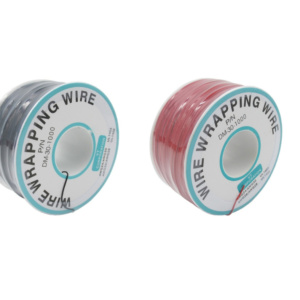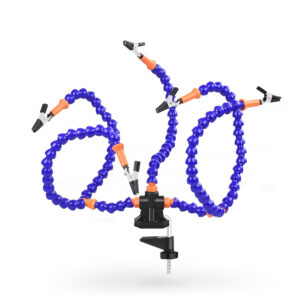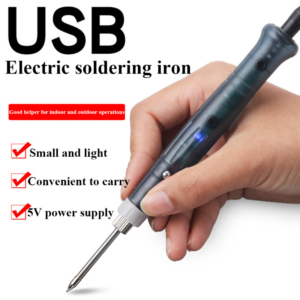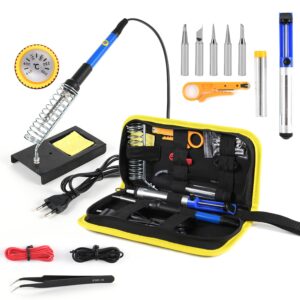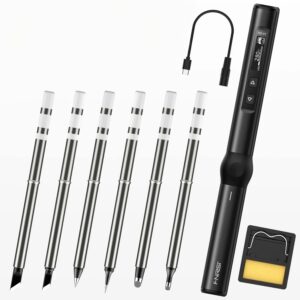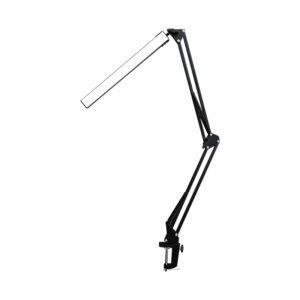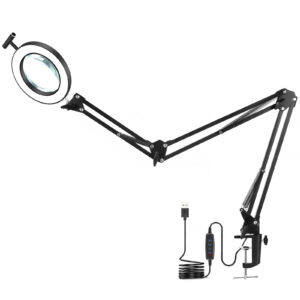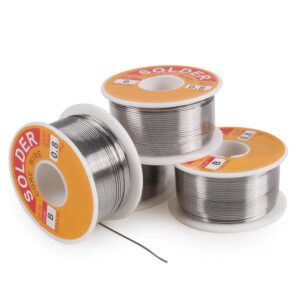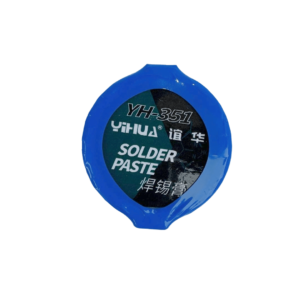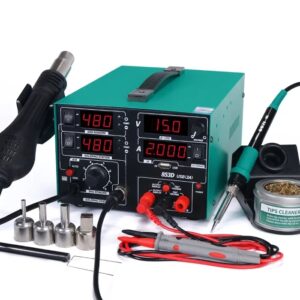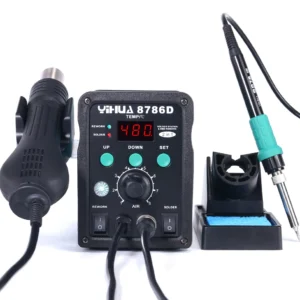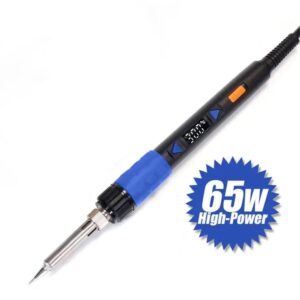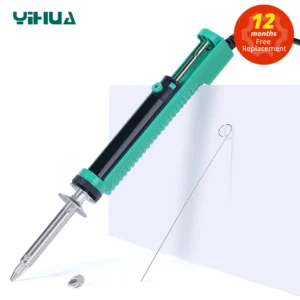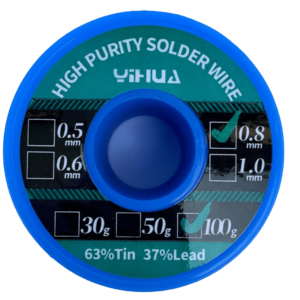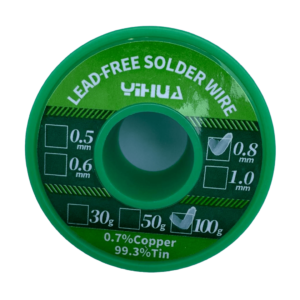Soldering Iron Kits & Accessories
Explore Kunkune‘s extensive range of soldering iron kits and accessories including Soldering Stations, YIHUA – Soldering Equipment, and Soldering irons. Perfect for applications ranging from hobbyist projects to demanding professional repairs.
Showing 1–16 of 17 results
- £2.90 Select options This product has multiple variants. The options may be chosen on the product page
- £11.90 Select options This product has multiple variants. The options may be chosen on the product page
- £34.90 – £44.90 Select options This product has multiple variants. The options may be chosen on the product page
- £5.90 Select options This product has multiple variants. The options may be chosen on the product page
- Original price was: £9.90.£7.90Current price is: £7.90. Select options This product has multiple variants. The options may be chosen on the product page
- Original price was: £11.90.£9.90Current price is: £9.90. Select options This product has multiple variants. The options may be chosen on the product page
Showing 1–16 of 17 results
Discover the Best Soldering Iron Kits for Your Project
Starting a soldering project demands both skill and the right tools. Selecting the most suitable soldering iron kit for your tasks is essential for creating clean, reliable joints. In this section, we’ll guide you through the different types of soldering irons, their specific uses, and how to maintain precise temperature control to achieve flawless soldering results.
Comprehensive Soldering Solutions
Soldering iron kits offer a complete set of tools tailored for various soldering tasks. From versatile soldering stations available in 3-in-1 and 2-in-1 configurations to specialized hot air stations, each type of equipment is designed to address different aspects of soldering work.
We collaborate closely with YIHUA, a reputable Chinese manufacturer of soldering equipment and all our range comes with 12 month guarantee. All items have a UK plug and most of them qualify for Free Delivery.
These kits feature durable soldering tips and adjustable temperature settings, ensuring you can tackle any project with precision.
Assessing Soldering Iron Kit Types and Their Uses
- Basic Soldering Pens: Ideal for small-scale electronics, featuring fine tips for precision handling.
- Hobbyist Soldering Kits: Include multiple tips and accessories, suitable for a wide range of tasks.
- Professional Soldering Stations: Offer superior temperature range and recovery times, perfect for delicate soldering on intricate circuit boards.
- Solder Guns: Powerful and easy to use, solder guns are excellent for heavy-duty tasks and larger projects. They heat up quickly and are typically used for larger components and thicker wires.
Understanding Wattage and Temperature Control for Precise Work
- Wattage: Wattage is a critical factor in determining the performance of a soldering iron. It affects both the maximum temperature the iron can reach and how quickly it heats up.
- Heat-Up Time: Higher wattage irons heat up faster, allowing you to start working more quickly and maintain consistent heat during extended use.
- Temperature Stability: Higher wattage ensures that the iron can maintain its temperature even when soldering larger joints or components that draw away heat. This stability is crucial for producing reliable and strong solder joints.
- Application Suitability:
- A 30-40W iron is generally sufficient for most electronics work, including small-scale projects and repairs, where excessive heat could damage delicate components.
- Heavy-duty soldering tasks, such as soldering thick wires or large connectors, often require irons with wattages up to 100W to ensure adequate heat delivery without long waiting periods.
Comparing Soldering Stations vs Standalone Irons
When deciding between a standalone soldering iron and a soldering station, it is important to consider the nature and demands of your projects. Each type has its own advantages and is suited to different kinds of work.
- Standalone Irons: Portable and straightforward, often featuring built-in temperature dials, making them ideal for quick repairs and small-scale projects.
- Soldering Stations: Include an integrated soldering iron stand, advanced temperature control, and facilities for different soldering tips, suitable for multipurpose soldering projects requiring consistency and adaptability.
Factors to Consider Before You Buy Soldering Irons
When delving into the vast selection of soldering irons available on the market, several crucial main soldering iron features must be contemplated to ensure that the soldering experience is optimal.
Key things to consider include the type of flux used, the quality of the cable, and whether you require the ability to braze or only solder.
A silicone cable is often preferred for its durability and flexibility, while a butane soldering iron offers cordless convenience for tasks not confined to a bench. The variety of soldering iron tips is also a factor; selecting the right one is paramount for multipurpose soldering applications.
Precise temperature control is a feature that cannot be overstated. It allows you to work with a variety of materials including lead-free solder, where a higher temperature range might be necessary.
Additionally, if you anticipate needing to remove solder at any point, the right desoldering tools like desoldering pump should be included in your kit. Opt for a model with adjustable temperature to maintain a clean solder joint without the risk of overheating and damaging sensitive components.
Ultimately, choosing the right soldering iron involves balancing functionality, comfort, and cost to meet your specific needs. By carefully assessing these factors, you can confidently invest in a soldering iron that is both robust and reliable, ensuring your projects are completed to the highest standard.
FAQ
Q: What should I consider when buying a soldering iron kit?
A: Some important things to consider when buying a soldering iron kit include: the wattage, with 30w and 60w soldering irons being common for basic soldering jobs; whether you need a soldering and desoldering tool like a solder sucker or a pair of tweezers; and the ability to adjust the temperature as some soldering iron provides this feature.
Q: What was your experience with the 30w and 60w soldering irons we tested?
A: The 30w soldering iron proved excellent for little soldering jobs, and it heated up quickly, while the 60w soldering iron was great for jobs that required more heat. Both had comfortable grips and adjustable temperature settings, making them both great soldering irons.
Q: What do I need to start soldering?
A: To start soldering, you’ll need a soldering device like a soldering iron or gun, solder wire or a tube of solder, a solder sucker for desoldering, a sponge to clean the hot tip of the iron, and a heat-resistant mat or stand for safety.
Q: What’s special about the Yihua 937D+ Soldering Station?
A: The Yihua 937D+ Soldering Station stands out for its temperature control capabilities, essential for achieving consistent soldering results and ensuring safety. Its design includes a lower voltage to the handle, which is a significant safety feature, especially given the direct hand contact with soldering irons.
Q: Is it necessary to use lead-free solder with my soldering kit?
A: It is not absolutely necessary, but it is recommended. Lead-free solder is safer to handle and breathe, plus it’s more environmentally-friendly. Be sure to adjust the temperature setting on your soldering iron correctly, since lead-free solder requires higher temperatures.
Q: What are the benefits of using a corded soldering iron over a cordless one?
A: Corded soldering irons, like the 230v soldering iron, offer consistent power without the need to worry about battery life. They are generally more suitable for long soldering jobs. However, a cordless or gas soldering iron gives you more freedom of movement and are perfect for outdoor use or in places where a power socket isn’t available.
Q: What is the function of a solder sucker in a soldering kit?
A: A solder sucker is a desoldering tool, it is used to remove melted solder from a circuit board. If you make a mistake or want to join something, the solder sucker will quickly and cleanly remove the solder, allowing you to start soldering again.
Check out our electronic test equipment, Wemos D1 mini boards and microcontroller boards with WiFi & bluetooth.


